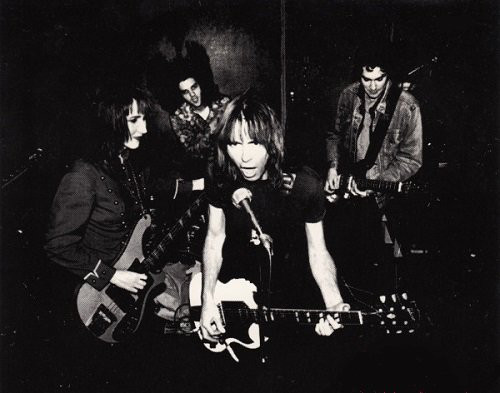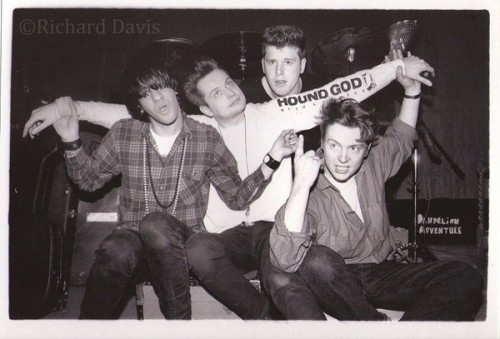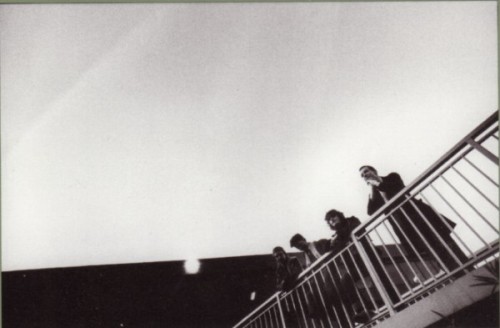Rock & roll has always been populated by fringe figures, cult artists who managed to develop a fanatical following because of their outsized quirks, but few cult rockers have ever been quite as weird, or beloved, as Ian Dury. As the leader of the underappreciated and ill-fated pub rockers Kilburn & the High Roads, Dury cut a striking figure -he remained handicapped from a childhood bout with polio, yet stalked the stage with dynamic charisma, spitting out music hall numbers and rockers in his thick Cockney accent. Dury was 28 at the time he formed Kilburn, and once they disbanded, conventional wisdom would have suggested that he was far too old to become a pop star, but conventional wisdom never played much of a role in Dury's career. Signing with the fledgling indie label Stiff in 1978, Dury developed a strange fusion of music hall, punk rock, and disco that brought him to stardom in his native England. Driven by a warped sense of humor and a pulsating beat, singles like "Hit Me with Your Rhythm Stick," "Sex & Drugs & Rock & Roll," and "Reasons to Be Cheerful, Pt. 3" became Top Ten hits in the U.K., yet Dury's most distinctive qualities -his dry wit and wordplay, thick Cockney accent, and fascination with music hall- kept him from gaining popularity outside of England. After his second album, Dury's style became formulaic, and he faded away in the early '80s, turning to an acting career instead.
At the age of seven, Ian Dury was stricken with polio. After spending two years in hospital, he attended a school for the physically handicapped. Following high school, he attended to the Royal College of Art, and after his graduation, he taught painting at the Canterbury Art College. In 1970, when he was 28 years old, Dury formed his first band, Kilburn & the High Roads. The Kilburns played simple,'50s rock & roll, occasionally making a detour into jazz. Over the next three years, they became a fixture on England's pub rock circuit. By 1973, their following was large enough that Dury could quit his teaching job. Several British critics became dedicated fans, and one of them, Charlie Gillett, became their manager. Gillett helped the band sign to the Warner subsidiary Raft, and the group recorded an album for the label in 1974. Warner refused to release the album, and after some struggling, the Kilburns broke away from Raft and signed with the Pye subsidiary Dawn in 1975. Dawn released 'Handsome' in 1975, but by that point, the pub rock scene was in decline, and the album was ignored. Kilburn & the High Roads disbanded by the end of the year.
Following the dissolution of the Kilburns, Dury continued to work with the band's pianist/guitarist, Chaz Jankel. By 1977, Dury had secured a contract with Stiff Records, and he recorded his debut with Jankel and a variety of pub rock veterans -including former Kilburn Davey Payne- and session musicians. Stiff had Dury play the 1977 package tour Live Stiffs in order to support his debut album 'New Boots and Panties!!', so he and Jankel assembled The Blockheads, recruiting guitarist John Turnbull, pianist Mickey Gallagher, bassist Norman Watt Roy, and drummer Charley Charles. Dury & the Blockheads became a very popular act shortly after the Live Stiffs tour, and 'New Boots and Panties!!' became a major hit, staying on the U.K. charts for nearly two years; it would eventually sell over a million copies worldwide. The album's first single, "What a Waste," reached the British Top Ten, while the subsequent non-LP single "Hit Me with Your Rhythm Stick" climbed all the way to number one.
Ian Dury had unexpectedly become a superstar in Britain, and American record companies were suddenly very interested in him. Arista won the rights to distribute Dury's Stiff recordings in the U.S., but despite overwhelmingly positive reviews, 'New Boots and Panties!!' stiffed in America, and the label instantly dropped him. Despite his poor U.S. sales, Dury was still riding high in his homeland, with his second album, 'Do It Yourself', entering the U.K. charts upon its summer release in 1979. Dury supported the acclaimed album, which saw him delving deeply into disco, with an extensive tour capped off by the release of the single "Reasons to Be Cheerful, Pt. 3," which climbed to number three. Once the tour was completed, Jankel left the band and Dury replaced him with Wilko Johnson, former lead guitarist for Dr. Feelgood. With Johnson, Dury released his last Stiff album, 'Laughter', which received mixed reviews but respectable sales upon its 1980 release. The following year, he signed with Polydor Records and reunited with Jankel. The pair flew to the Bahamas to record his Polydor debut with reggae superstars Sly Dunbar and Robbie Shakespeare. The resulting album, 'Lord Upminster', received mixed reviews and poor sales upon its 1981 release; the album was notable for the inclusion of the single "Spasticus Autisticus," a song Dury wrote for the United Nations Year of the Disabled, but was rejected.
Following the failure of 'Lord Upminster', Dury quietly backed away from a recording career and began to concentrate on acting; 1984's '4000 Weeks Holiday', an album recorded with his new band The Music Students, was his last major record of the '80s. He appeared in several plays and television shows, as well as the Peter Greenaway film "The Cook, the Thief, His Wife and Her Lover" and Roman Polanski's movie "Pirates". He also began to write jingles for British commercials. In 1989, he wrote the musical 'Apples' with Mickey Gallagher, and he also appeared in the stage production of the play. Dury returned to recording in 1992 with 'The Bus Driver's Prayer and Other Stories'.
In May 1998, Dury announced that he had been diagnosed with colon cancer in 1995 and that the disease had spread to his liver. He decided to release the information the weekend of his 56th birthday, in hopes of offering encouragement for others battling the disease. For the next year, he battled the disease while keeping a public profile -in the fall of 1999, he was inducted into Q magazine's songwriting hall of fame, and he appeared at the ceremony. Sadly, it was his last public appearance. Dury succumbed to cancer on March 27, 2000. He left behind a truly unique, individual body of work. [SOURCE: ALLMUSIC]





















